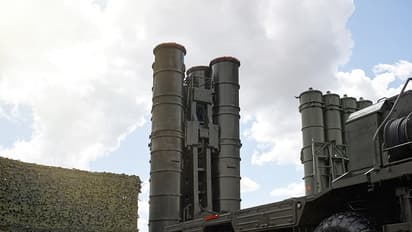S-400 Air Defence Systems: What is India’s Sudarshan Chakra and how it works- Details inside

Synopsis
India's S-400 air defence system, codenamed Sudarshan Chakra, played a crucial role in thwarting enemy attacks during Operation Sindoor. Learn about its capabilities and significance in India's defense strategy.
In retaliation for the Pahalgam terror attack, the Indian armed forces launched Operation Sindoor. Pakistan responded by attempting multiple attacks on Indian military installations and civilian areas, launching missiles and drones, and deploying fighter jets. India's robust air defense system neutralized these attacks, downing a Pakistani AWACS aircraft and three fighter jets. India's S-400 air defense system, codenamed Sudarshan Chakra, played a pivotal role in this operation.
What is the S-400 Sudarshan Chakra?
The S-400 is a long-range surface-to-air missile system developed by Russia's Almaz Central Design Bureau. Considered one of the world's most advanced air defense systems, it can detect and track drones, aircraft, fighter jets, stealth planes, cruise missiles, and ballistic missiles up to 600km away and engage targets up to 400km.
Each S-400 squadron consists of two batteries. Each battery has six launchers, along with command and control systems, surveillance radar, and engagement radar. Each battery is equipped to launch 128 missiles.
India signed a deal with Russia in 2018 for five S-400 squadrons, worth ₹35,000 crore. India currently possesses three S-400 squadrons, deployed along its borders.
Capabilities of the S-400 System
- The S-400 can engage aerial threats up to 400 km away, with missiles reaching altitudes of up to 30 km. The S-400 utilizes four types of missiles with varying ranges.
- 48N6 missile - Range: 250km, capable of intercepting ballistic missiles.
- 40N6 missile - Range: 400km, used against AWACS aircraft, aerial refueling aircraft, and other high-value targets.
- 9M96E and 9M96E2 missiles - Range: 40 to 120 km, designed to destroy fast and agile targets like fighter jets and cruise missiles.
Simultaneous Tracking of 160 Targets
The S-400 can simultaneously track 160 targets and engage up to 72 targets. Its missiles can intercept missiles traveling at speeds of up to 17,000 km/h and engage targets flying at altitudes from 10 meters to 30 kilometers.
Rapid Deployment of the S-400
The S-400's radar and missiles are mounted on trucks, enabling deployment in challenging terrains. The system can be deployed rapidly, becoming operational in just 5 minutes. The trucks carrying the S-400 can travel at speeds of up to 60 km/h on roads and 25 km/h off-road.
Stay updated with the Breaking News Today and Latest News from across India and around the world. Get real-time updates, in-depth analysis, and comprehensive coverage of India News, World News, Indian Defence News, Kerala News, and Karnataka News. From politics to current affairs, follow every major story as it unfolds. IMD cities weather forecastsRain Cyclone Asianet News Official App